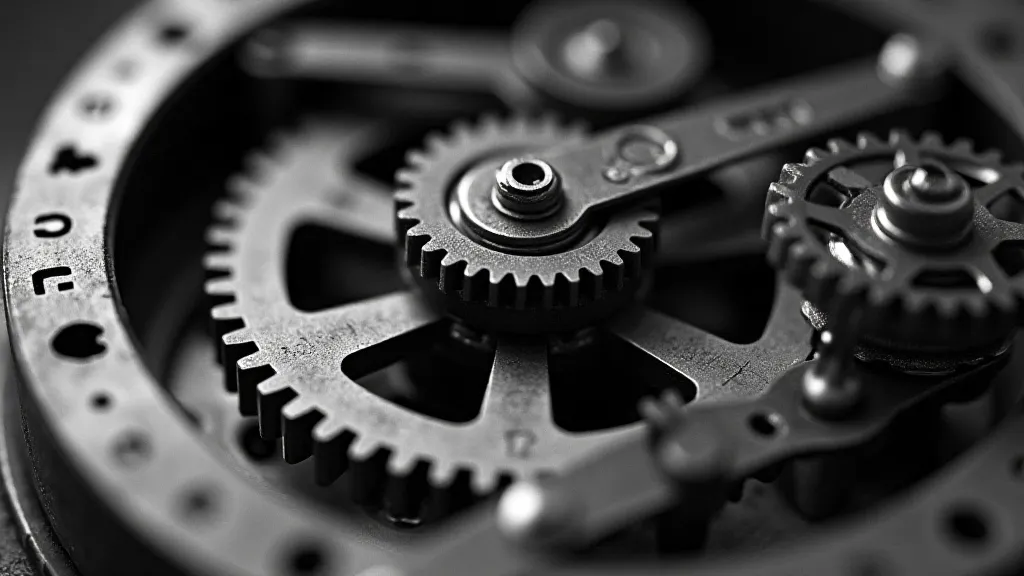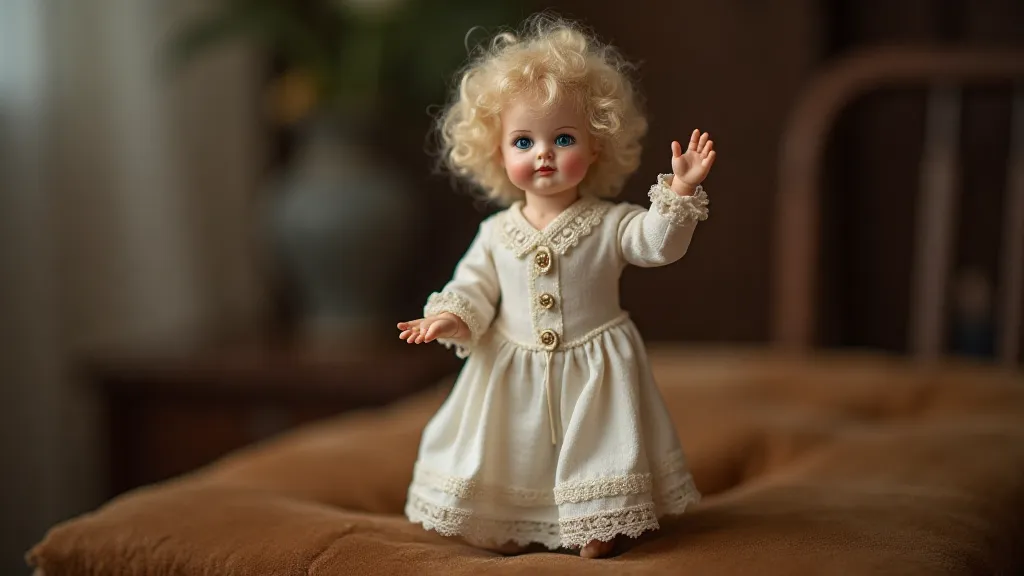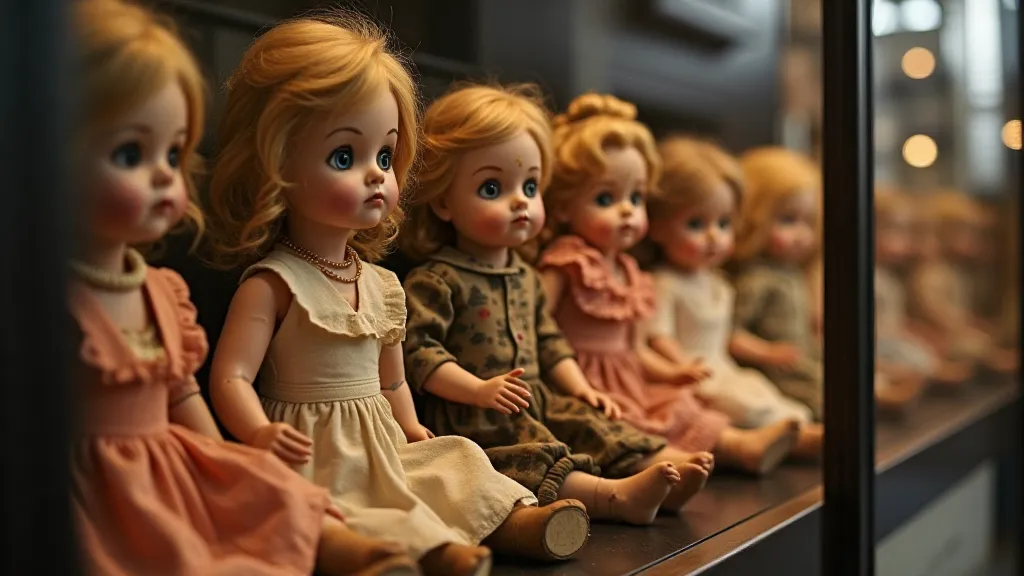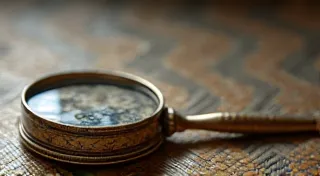The Clockwork Heart: Mechanical Marvels Among Antique Dolls
There’s a particular magic that clings to antique dolls. Beyond the porcelain skin and painted eyes lies a story, a whisper of childhood laughter echoing from a bygone era. But when those eyes blink, and a delicate arm raises in a graceful wave, that story becomes even more captivating. We're delving into the fascinating world of antique dolls with mechanical movements – the clockwork wonders that embody ingenuity, artistry, and a touch of pure enchantment. Collecting antique dolls is more than just acquiring beautiful objects; it’s about preserving a tangible connection to history and appreciating the remarkable innovation that brought these toys to life. The dedication required to truly understand and care for these treasures can be significant, leading some to the point of obsession – a pursuit we’s touched on briefly in The Collector's Paradox: Obsession and the Pursuit of Perfection in Antique Doll Collecting.
A Tick and a Tock: The Dawn of Mechanical Dolls
The history of mechanical dolls stretches back centuries, though their true flowering occurred in the 19th century. Early attempts at automata – self-operating machines – were complex and largely confined to the realm of novelty items for the wealthy. But the Industrial Revolution, with its burgeoning advancements in clockmaking and manufacturing, paved the way for miniature marvels accessible to a wider audience. Before the era of battery-powered toys, clockwork was the primary method of animation. These weren’t merely dolls; they were tiny engineering feats, requiring meticulous design and painstaking assembly.
Imagine the workshops of Germany, France, and England during the mid-1800s. Skilled artisans, often employing generations-old techniques, were painstakingly crafting these delicate mechanisms. The core of a clockwork doll was a wound spring, connected to a series of gears and levers. As the spring unwound, it released energy, triggering sequences of movements: a wave of the hand, a lift of the head, even a miniature walk. The complexity varied wildly; some dolls simply blinked or nodded, while others performed elaborate routines, playing music or mimicking human actions. The transition from simple automata to articulated dolls was a significant turning point in toy history. The repair and restoration of these marvels are often complicated, requiring a reverence for their history - a topic examined more closely in Fractured Elegance: Repairing and Restoring Antique Dolls with Reverence.

The Masters of Movement: French and German Dollmakers
France and Germany emerged as the epicenters of mechanical doll production. French dollmakers, known for their exquisite artistry and detailed costumes, often incorporated complex movements into their creations. Brands like Jumeau, Bru, and Steiner were revered for their beauty and sophistication. German dollmakers, on the other hand, prioritized innovation and mass production, bringing mechanical dolls to a broader market. Kestner, Reinhold & Co., and Bing were giants in the German industry.
My grandmother, a passionate collector herself, told me stories of her childhood, where a small, French doll with a musical movement was the most treasured possession. She’s passed on the appreciation of these marvels; the simple act of winding the key, hearing the faint click of the gears, and watching the doll come to life feels deeply personal. It's not merely a toy; it's a vessel carrying memories and emotions across generations. The fragility of these toys only adds to their allure; knowing that they represent a piece of history, meticulously crafted by hand, inspires a profound sense of responsibility to protect and cherish them. The emotional connection people form with these dolls can be powerful, often extending far beyond their monetary value – a concept we explore further in The Alchemy of Sentiment: How Antique Dolls Transmute Value Beyond Monetary Worth.
Decoding the Movements: Common Mechanisms and Their Significance
Identifying the type of movement in an antique doll is a crucial skill for collectors. Simple mechanisms might include a blink of the eyes, a nod of the head, or a wave of the arm. More complex movements could involve a walking action, playing a musical tune, or even a combination of several movements. "Walking dolls," for instance, were particularly impressive feats of engineering. These dolls employed a clever combination of gears, levers, and a small crank to simulate a walking motion, often accompanied by a charming melody.
The presence of a musical movement is another significant detail. These movements, often playing a short, repetitive tune, were typically powered by a wound spring and a small cylinder with tiny pins that plucked at a comb-like structure. The melodies were often folk songs or popular tunes of the era. The value of a doll is often directly correlated with the complexity and functionality of its mechanism. A doll with a non-working mechanism, while still valuable for its aesthetics, will generally command a lower price than one in perfect working order.

Restoration Considerations: A Delicate Balance
Restoring antique dolls with mechanical movements is a delicate undertaking, best left to experienced professionals. Improper handling can easily damage the fragile mechanism, reducing its value and potentially rendering it irreparable. Cleaning should be minimal, focusing on surface dust removal rather than attempting to disassemble and overhaul the movement. Lubrication is also crucial; using the correct type of oil is essential to prevent damage to the delicate gears and springs. The inherent value of a doll isn't always determined by its pristine condition; often, the marks of time and cherished play hold a unique and irreplaceable beauty.
Often, the greatest reward lies in preserving the doll’s original condition, even if it means accepting a non-working mechanism. Patina and wear marks are testament to the doll’s history, telling a story of cherished moments and countless playtimes. Trying to "perfect" a doll often diminishes its authenticity and character. As a collector, it's less about perfection and more about appreciation—acknowledging the time and artistry that brought these beautiful objects into existence. The emotional inheritance we receive from previous owners adds another layer of meaning to these treasured possessions – a theme we’re exploring in a dedicated piece on the legacies of passed-down toys.
Collecting Tips and Valuation Insights
For those interested in collecting antique dolls with mechanical movements, several factors influence value. Rarity is paramount; dolls produced in limited quantities command higher prices. Condition is crucial; dolls in excellent condition, with original clothing and accessories, are more desirable. Provenance – the documented history of a doll’s ownership – can also add significant value. Researching dollmakers and their catalogs is essential to accurately identify and value dolls. Understanding the intricate details of a doll's history and design can be a rewarding journey in itself.
Online auction platforms and antique doll shows are excellent resources for finding these treasures. Building relationships with experienced collectors and dealers can provide valuable insights and access to rare finds. The joy of collecting antique dolls isn’t solely about monetary value; it’s about connecting with history, appreciating artistry, and sharing the magic of these mechanical marvels with future generations. The allure of these objects often extends beyond the tangible, creating a profound sense of connection to the past - a sentiment we're keen to examine further.






